
By Karen Rubin, Travel Features Syndicate, goingplacesfarandnear.com
The ages of the 200 of us on this year’s Rails-to-Trails Conservancy Sojourn, biking 150-miles along the Great Allegheny Passage (GAP) and Montour Trail across western Pennsylvania, ranges from 9 to 83 years old. Indeed, there are 15 young people and three octogenarians among us.
A bike tour such as this, along relatively flat trails free of cars and other hazards, is a great equalizer: youngsters feel competent, accomplished, adventurous; and oldsters, well, feel competent, accomplished, adventurous and youthful.
Our group comes from more than 30 states plus Canada and as far as Alaska, including families, three generations (a grandfather who is a retired physics professor, his three sons and two grandsons); grandfathers with grandsons, a mother with her son; husbands without wives; wives without husbands; and single women relishing the simultaneous independence with community.
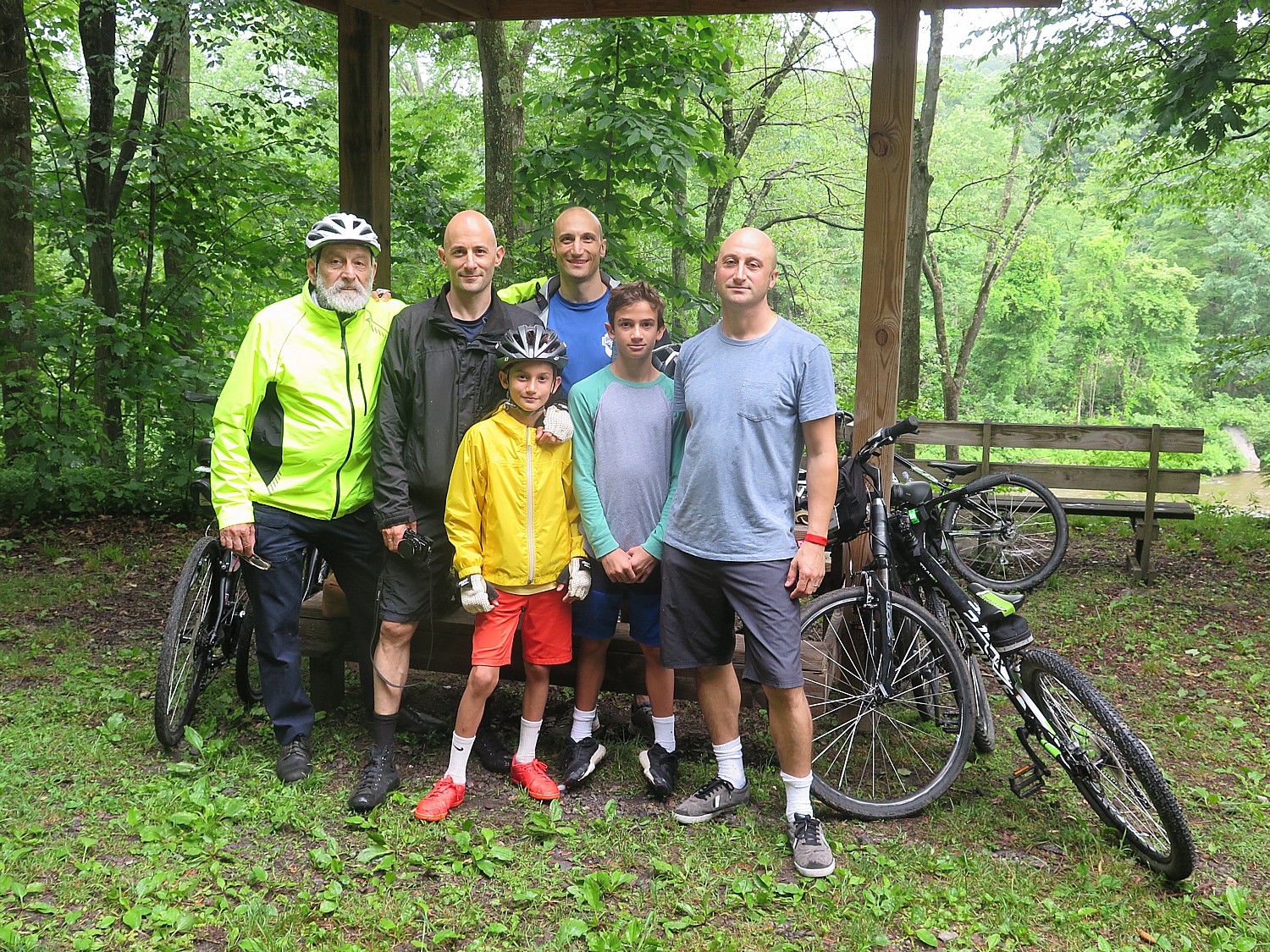
I reconnect with a couple from DC whom I first met on the 400-mile Erie Canal bikeride two years ago, again last year on this RTC Sojourn on the GAP, and this year, we find ourselves sitting next to each other on the bus from the drop-off to the start of the ride – he is the 83-year old. I meet people like Ed Holowinko of Connecticut, who was one of the activists who helped save the Walk over the Hudson, when otherwise, the bridge would have been taken down and instead has become one of the most popular attractions in the state. I meet people who defy the stereotype of an environmentalist cyclist: a woman who is as comfortable riding her motorcycle as her bike and a man who proudly defends the NRA (though political discussions are assiduously avoided, just as at any family gathering).

The supported ride is ideal for singles and families as well as those on their first biketour or experiencing their first long-distance ride: a luggage truck brings your stuff from one campsite to the next; there is breakfast and dinner provided daily; shower trucks and portasans supplement the campsite’s facilities; charging stations. If you don’t want to set up a tent, you can luxuriate in hiring Comfy Campers which provides a terrifically comfortable, watertight tent with air mattress, chair, fresh towel daily, cooling area with water and lemonade and chargers – the closest thing to “glamping” you can find. (Those who don’t want to camp can take advantage of bed-and-breakfast accommodations along the route.) In addition, there is a bike mechanic and massage therapists, and a volunteer nurse who travel with us.
There is such a sense of community that immediately forms in our tent city – sitting around long tables at breakfast and dinner; waiting for a turn at the shower truck, brushing teeth at the sinks – it’s like a giant pajama party. The kids come together in games and activities; we gather around for an evening talk (one night Pennsylvania Jack, a storyteller, regaled us), a campfire, and, for the final night, a talent show (contestants competed for the grand prize, a Fuji bike!). Another nice feature this year: Sierra Nevada Brewing Company joined as a sponsor, and we have free beer (terrific Pale Ale!) on a few of our dinners.

There are endless conversations with people who have never heard your stories before that typically begin, “Where are you from?” I meet a woman from Michigan who, now retired, takes one of these long-distance biketours on rail-trails practically monthly – Michigan’s Upper Peninsula; the Katy Trail, in Missouri; the Louisiana Bayou.
Many of us (one-third, in fact), had been on this Sojourn on the Great Allegheny Passage before, including me, but the destination and the experience is so fantastic, it is delightful to return over and over. Each day provides a different highlight, and each person will have a different experience. And each day brings its own serendipity, its own uniqueness – the season, weather, lighting, chance encounters, different things to explore. Indeed, even the sections of the Great Allegheny Passage that I had traveled last year in spring were very different this summer.

What is more, there are significant differences in the itinerary – this year’s trip was longer in distance and days, starting out closer to the Mason-Dixon Line and the Eastern Continental Divide (and the beginning of the 150-mile long GAP, which starts in Cumberland, Maryland, 21 miles further east from the Mason-Dixon line, but would involve a steep uphill climb; the way we do it, there is only a slight incline and most of us ride the mere 4 miles out and back, adding a mere 8 miles to the first day’s tally); featured a “fun day” in Pennsylvania’s magnificent Ohiopyle State Park when we get to choose among four different activities (I choose a Class III whitewater river rafting experience which is sensational; others choose a milder Class I river rafting trip, or visits to one of two Frank Lloyd Wright-designed homes, Fallingwaters or Kentuck Nob, and still others just do their own thing), which also meant we had two days at one campsite.
Also, the ending of the trip takes us back toward Pittsburgh (actually Coraopolis, PA) on the Montour Trail, which, like the Great Allegheny Passage – both award-winning trails – and a superb example of how obsolete rail lines (or canalways, or right-of-ways alongside active rail lines) can be turned into multi-use recreational trails. These linear parks, if you will, not only provide wellness and outdoor activities for families to do together, but also revitalize towns and villages whose economies have been upended by shuttered factories and mines, towns and villages that for so long had been defined by the railroads, the steel mills, the coal mines. Along the way, I will capture images of the cyclists on the rail trail cutting into hillsides topped with wind turbines above the Pennsylvania towns founded on oil, coal and gas. The rail-trails provide a new lease on life, as it were, and we realize it as the chambers of commerce, tourist bureaus, volunteer firefighters, Rotary and Lions Clubs go out of their way to greet us.
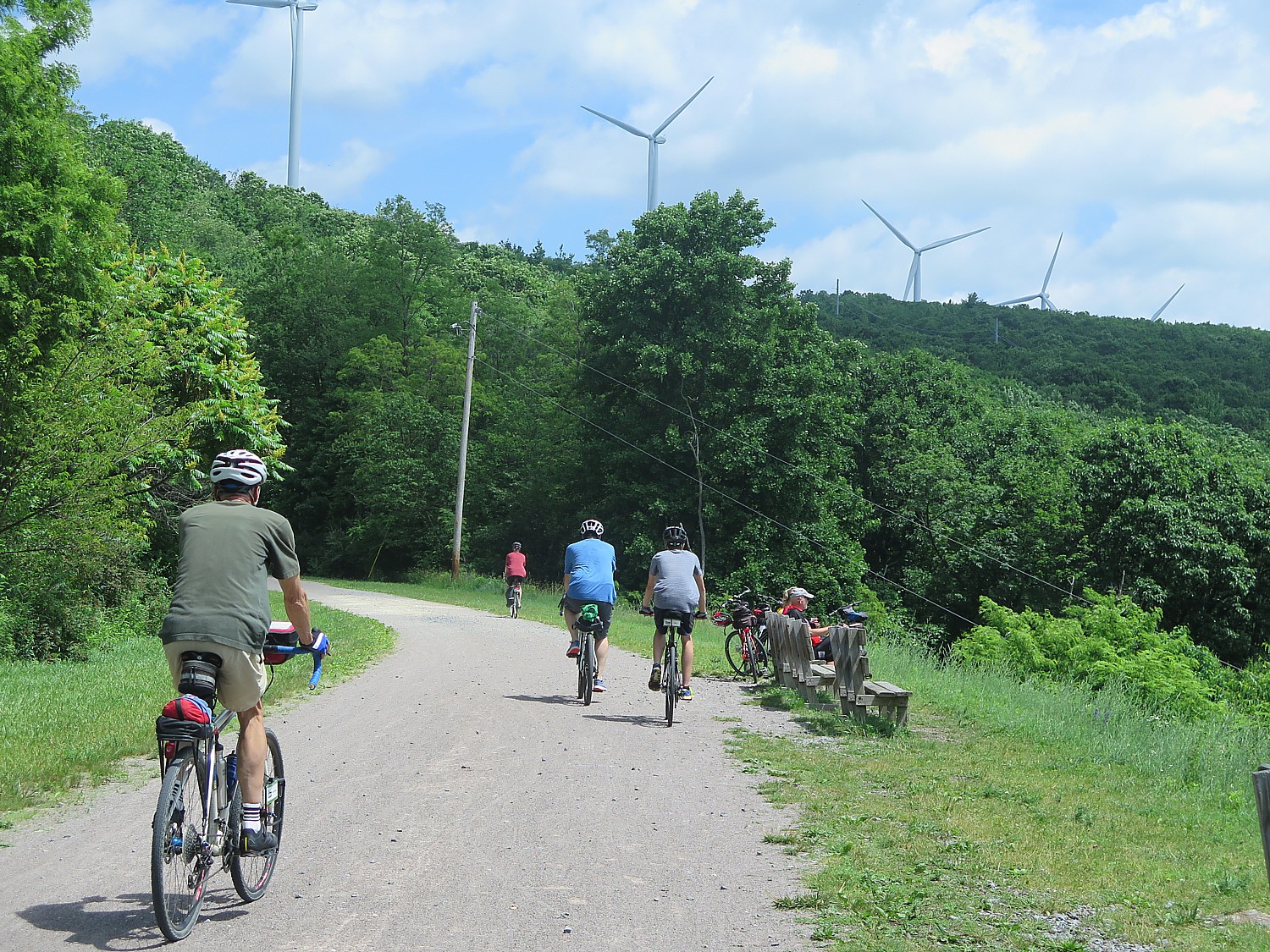
And so we are welcomed at Meyersdale, our first night’s destination, where the railroad station along the Great Allegheny Passage has been turned into a delightful historical society display, refreshment stand and shop, by representatives of local chamber; a special Sunday evening service at the church features a prayer for all the Sojourners to have a safe ride, dinner at the fire department and breakfast at what used to be the town’s high school. This is a town that once supported six hotels, a bank, a high school and elementary school – today, all but the bank (built in 1904) are shuttered. And while the GAP goes over one railroad line that has been turned into the railtrail, there is still an active railroad line that goes right through the middle of town.
Walking about after our dinner, there is this eerie quiet and stillness – a sense of being in a movie set, rather than a town, or a scene in Twilight Zone (granted, it is Sunday and Fathers’ Day at that). I pass a barber shop and peer in: there is a crumbled newspaper, brown and deteriorating with age; the leather barber chairs are cracked; the shop seems to have been left alone for decades- I take note of a Sheriff’s notice on the door handle. I pass a porch with a Confederate flag and “Don’t tread on me” banner.
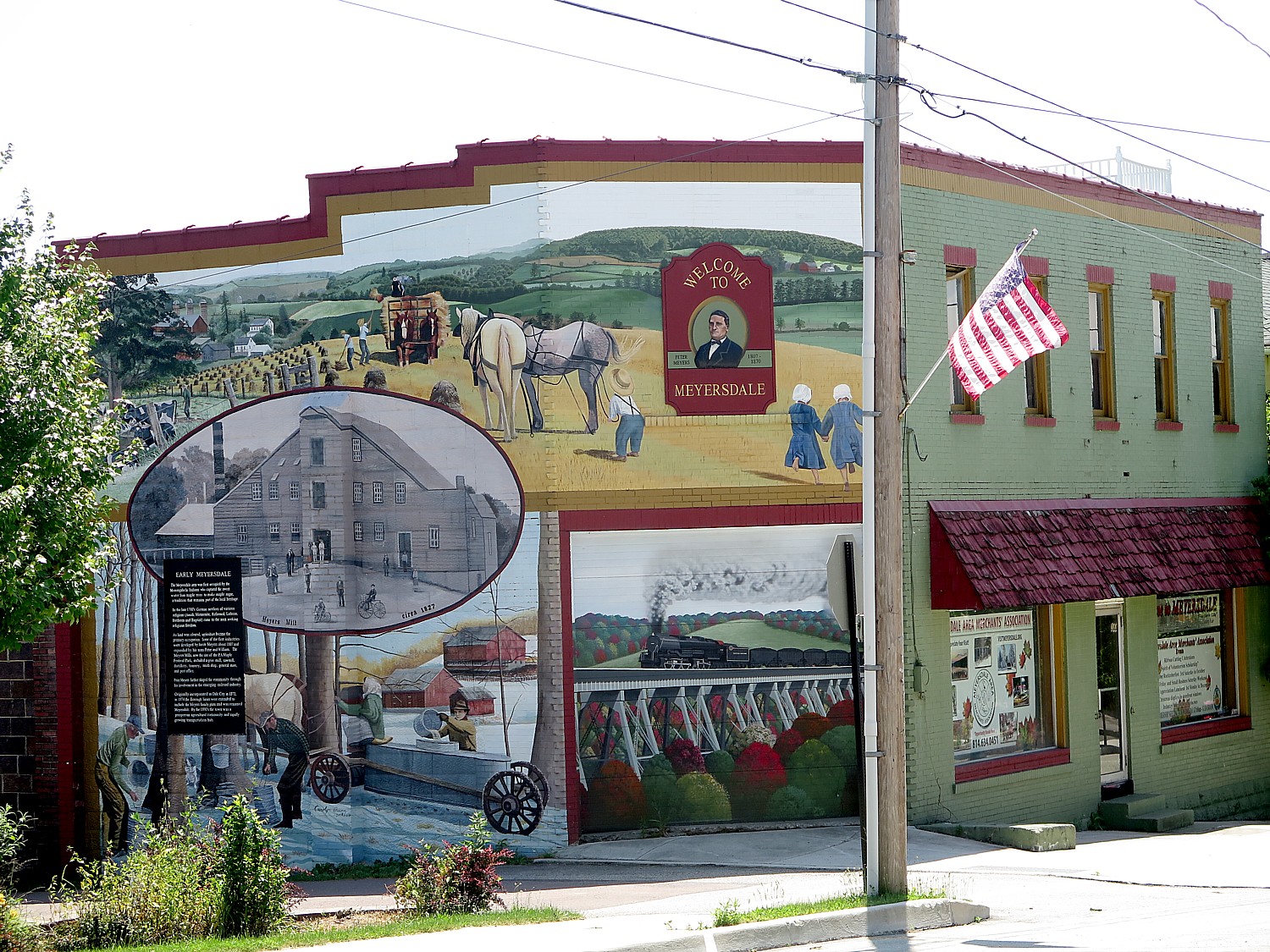
Meyersdale is a very proud community – it showcases its history on markers, on magnificent painted murals that fill entire sides of buildings, even on the placemats that picture the town’s history and attractions which are laid out for our breakfast that features Meyersdale’s famous maple syrup (who knew this was the capital of maple syrup making?).
The towns we get to visit are absolutely wonderful – quite literally, Smalltown America -and the contrast with seeing nothing but trees, rocks and river along the trail is stimulating and intriguing.
You are deep in the forest – for much of the way, riding alongside a river or creek on one side, and outcroppings of rocks on the other, riding through a literal “tree tunnel” that envelopes you. Occasionally we ride by a farm, but most of the time, the solitude is just stunning – the kind of serenity you feel when you are hiking. The only sound is the wind you create by riding, the crunching sound of the bike wheels on the hard-packed gravel, and birds. Many, many birds. Occasionally we pass by a small waterfall. It is surprising with so much land all around we don’t see that many animals, though on one day, we come upon several deer on the trail; chipmunks who scurry across the path (amazing how they time their dash), making a huge leap into the bushes just as I am about to reach them. The quiet is occasionally broken by a train whistle and the chugging as they haul something like 8000 tons of coal on tracks on the opposite riverbank.
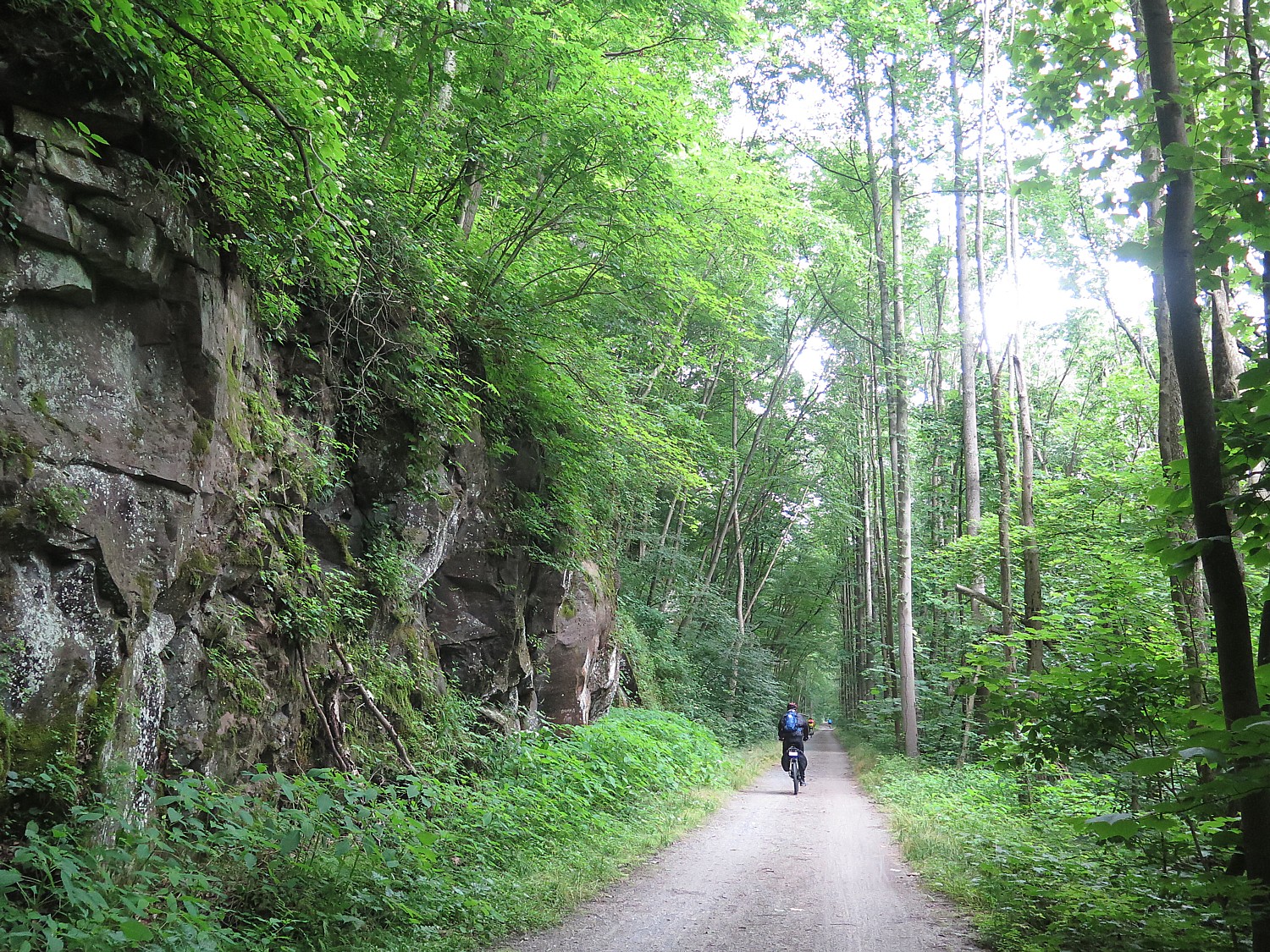
If you are a writer or poet, this is better to get creative juices flowing than holing up in isolated cabin – your imagination and your thoughts dance in your head as you ride, nurtured by the rhythms and the endorphins. If you are an artist, you will be inspired by the scenes that stream by.
At one point, I think to myself, “We are like nomads, like pioneers, steadily picking up stakes and moving on, each time setting up a new community.”
The trail also has some wonderfully thrilling and dramatic features – it is tremendous fun (exciting too) going through these old rail tunnels, over viaducts and steel bridges – that have been built for the trains, but now rebuilt and repurposed, largely because of the efforts of local communities and volunteers, for bikes.

We ride at our own pace – and can go off the trail to explore if we like – and depending upon the length of ride (from about 30 miles to the longest ride, 62 miles with some optional add-ons, averaging 35-40 miles a day), we would have one or two rest stops with snacks and cold water. They offer suggestions for lunch or ice cream or attractions we might want to explore, like Rockwood’s Opera House (our cue sheets offer great detail). And in many cases, people from the town set up to welcome us.
This is clear from the first day, when we have the option of either riding a mere 8 miles to the first night’s campsite, just 8 miles to Meyersdale, or add four miles out and back to explore several iconic sites, including the Eastern Continental Divide, the Big Savage Tunnel, the Big Savage Overlook and the Mason-Dixon Line monument.
At that night’s dinner, held in the Meyersdale Fire House, the trip leader, Tom Sexton, Director of the Northeast Regional Office of the Rails-to-Trails Conservancy. Who is leading the Sojourn, talks about the mission of Rails-to-Trails Conservancy, and our role as Sojourners.
Rails-to-Trails Conservancy (RTC) has played a key advocacy role to promote the creation and use of these repurposed trails. RTC has been a partner, providing technical assistance – such as negotiating with railroads, advising localities on visioning and feasibility studies as well as construction, and coordination with nonprofits and volunteer efforts, such as the Montour Trail Council that has been so active in building and improving the trail we will take.
A current project underway will link trails in four states, New York, Pennsylvania, Ohio, West Virginia, creating an Industrial Heartland Trail Network. (New York State, which has the Erie Canalway that extends from Buffalo to Albany, is creating the Empire State Trail, finishing 350-miles of new trails that would complete the Eric Canalway and the Hudson River Valley Greenway, and connecting them to form a 750-mile pathway, the longest in the nation, from New York Harbor, through the Adirondack Mountains, to the Canadian border, and from Lake Erie to Albany.
Rails-to-Trails Conservancy promotes the use of rail-trails – there are some 23,000 miles of rail-trails- and its TrailLink.com website helps you locate them.
RTC is also an advocacy group lobbying Congress and the administration, which will be important coming up, because Trump’s proposed budget would eliminate the earmarks for rail-trails.
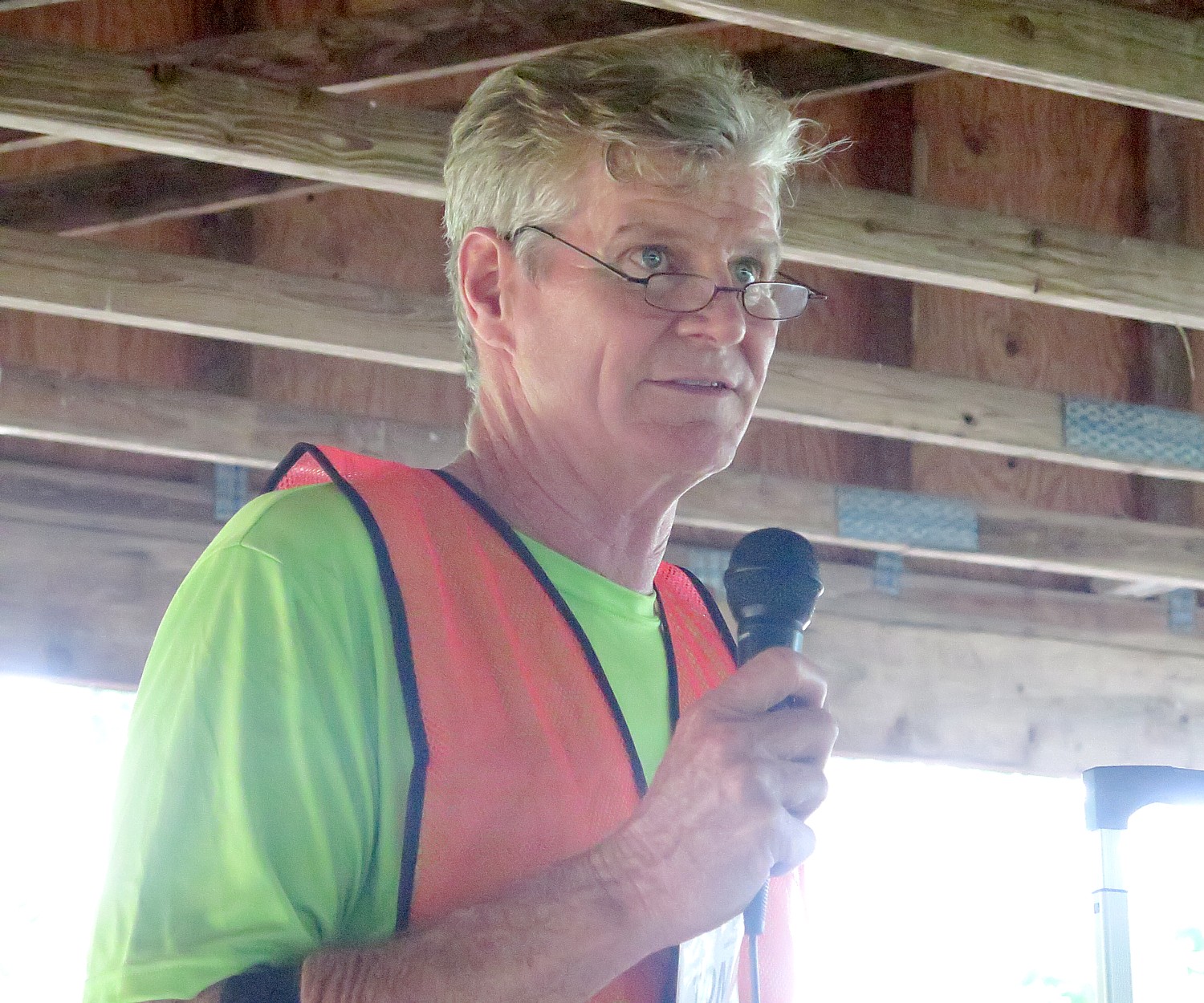
As Sexton explains, since 1991, the major funding for these rail-to-trail projects has come from the federal government, with matching funds from states and localities. The Highway Bill had typically included mass transit and railroad funding but beginning in 1991, also earmarked funding for 10 categories, including rail-trails, given as grants to states to use for acquisition, planning and construction.
But that is under threat by the new administration:
“The president’s budget proposal eliminates all funding for the wildly popular TIGER program, which is bad news for trails and active transportation,” RTC states. “Without TIGER, trails could miss out on hundreds of millions in funding. Since the program began in 2009, TIGER has provided nearly $340 million in funding for active transportation projects and trail networks like the Circuit Trails in Philadelphia, Cleveland Metroparks and the Atlanta BeltLine. What’s more, using the American Association of State Highway Transportation Officials’ methodology to calculate jobs per mile of trail built, we project that TIGER investments in active transportation have generated thousands of jobs.
“TIGER is much more than a program that supports trails; it funds all transportation modes and is unique in that it encourages cross-jurisdictional and multimodal cooperation, breaking down traditional bureaucratic silos and looking at balanced transportation systems as a whole. This makes the program intentional, focused and efficient in the projects it selects—and effective in achieving outcomes after construction.
“The U.S. Department of Transportation has thus far awarded TIGER funding to diverse projects including roads and bridges, ports, railways, transit, freight operations and, of course, trails and other walking and biking infrastructure. However, the new president and transportation secretary will set their own funding priorities….
“The budget also calls for an end to general fund infusions to the Highway Trust Fund, eliminating $95 billion in expected transportation spending over the same 10 years, raising further doubts about the extent to which infrastructure investment would increase if the president’s budget proposal were to pass.”
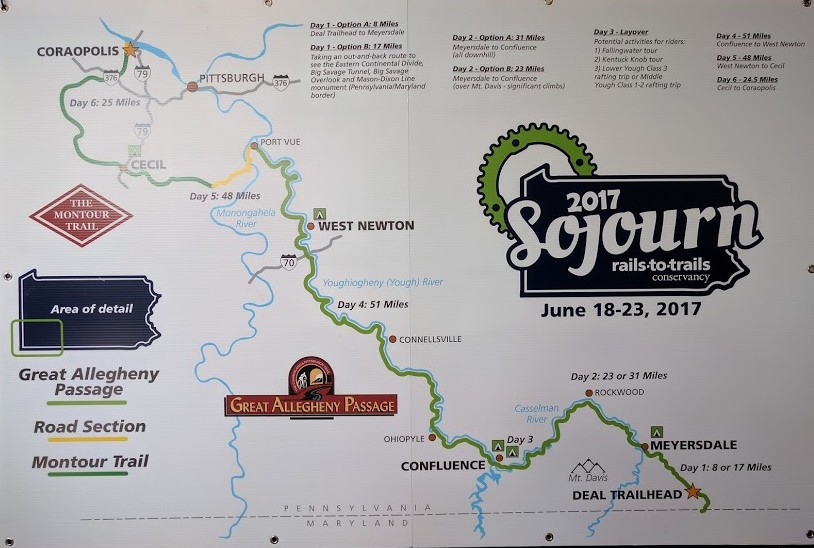
Indeed, we Sojourners are ambassadors and advocates and increasingly now, also activists.
“Everyone here is an ambassador,” says Brandi Horton, RTC’s VP of Communications. “We show the towns, the communities, city and town and state governments just how important rail trails are to building community, generating economic development, building tourism and getting people out together.”
Tips for advocating include bringing a friend out with you on the trail, use social media, lobby state and federal legislators to make sure trails are included in infrastructure funding; let your Congressmember know you use the trails, send a photo.
RTC has also its “take action” section of the website, where you can plug in your zipcode, find your official and send a note.
“Be a spokesperson, do community outreach. If you want to get a trail in your community, you need your voice heard not just at the federal, state and regional level, but at the local level.”
Rails-to-Trails Conservancy, Washington, DC 20037, 202-974-5150, Railstotrails.org, TrailLink.com.
See next:
Rails-to-Trails Conservancy’s Sojourn Biketour on Great Allegheny Passage Showcases Forgotten Towns
Pascal Glass Sculpture with Trump Connection is Boon for Dunbar, Pennsylvania
____________________
© 2017 Travel Features Syndicate, a division of Workstyles, Inc. All rights reserved. Visit goingplacesfarandnear.com, www.huffingtonpost.com/author/karen-rubin , and travelwritersmagazine.com/TravelFeaturesSyndicate/. Blogging at goingplacesnearandfar.wordpress.com and moralcompasstravel.info. Send comments or questions to FamTravLtr@aol.com. Tweet @TravelFeatures. ‘Like’ us at facebook.com/NewsPhotoFeatures

3 thoughts on “Rails-to-Trails Conservancy’s BikeTour on Great Allegheny Passage Highlights Benefits of RailTrails”
Comments are closed.